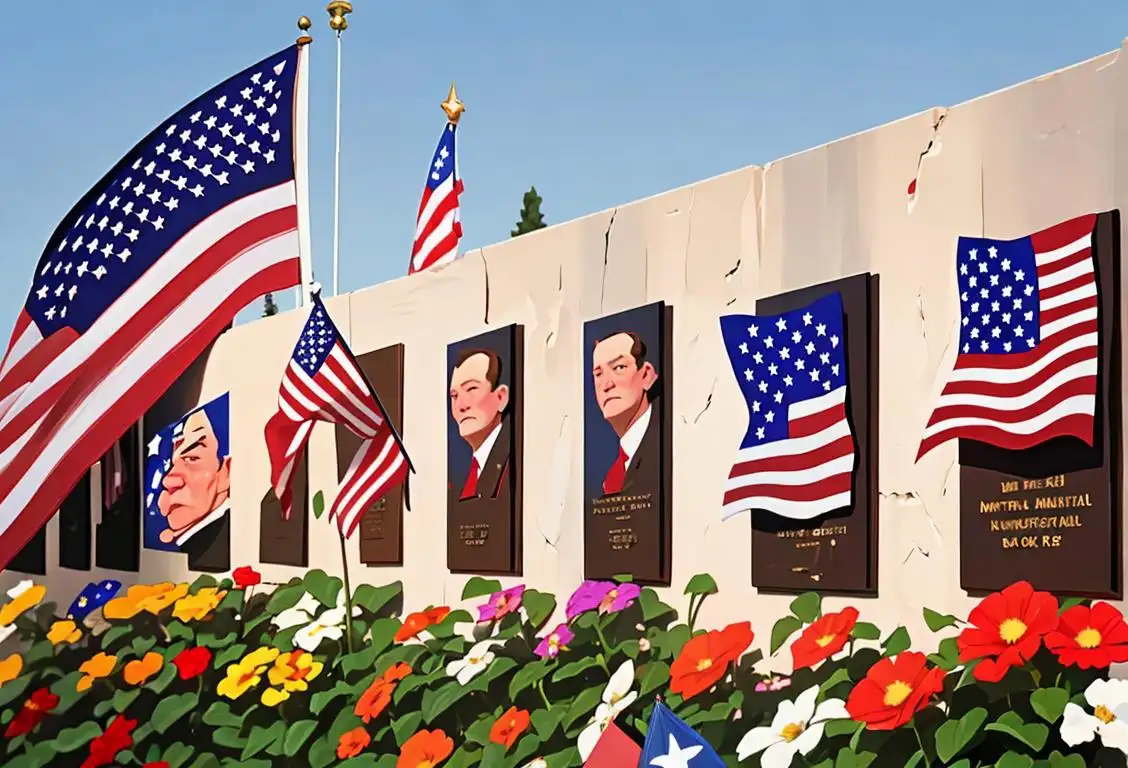National Logistics Day

Ah, National Logistics Day, where would we be without the magical world of logistics? It's a day to celebrate all the behind-the-scenes heroes who keep our world running smoothly. So, grab your packing peanuts and let's dive into the wacky and wonderful world of logistics!
When is Logistics Day?
It's national logistics day on the 28th June.
A Journey Through Time and Space (and Boxes)
Logistics, my friends, is like the air we breathe - invisible yet essential. It's the intricate puzzle of moving goods and services from point A to point B, C, D, and beyond. Whether it's delivering packages to your doorstep or ensuring vital medical supplies reach remote areas, logistics makes it happen.
How did logistics come to be? Well, Picture this: cavemen trying to send smoke signals to their neighboring tribes, desperately hoping their message reaches its destination. Fast forward to the medieval times when pigeons were the FedEx of the day. Nowadays, we've got drones zipping through the skies and 18-wheelers roaring down the highways. Talk about progress!
A Team Effort
Logistics isn't a solo act - it's a grand symphony of different moving parts. Let's meet some of the key players:
- Supply Chain Managers: The masterminds who plan, organize, and optimize the entire logistical process.
- Warehouse Wizards: These folks know how to store, sort, and label goods with the precision of a seasoned Tetris player.
- Delivery Heroes: Those brave souls who navigate traffic, weather, and the occasional angry chihuahua to bring us our packages.
And that's just scratching the surface. From truck drivers and pilots to customs officers and forklift operators, countless individuals work tirelessly behind the scenes to keep the wheels of logistics turning.
Logistics Fun Fact
Did you know that the largest container ship in the world can carry over 20,000 containers? That's a whole lot of stuff! You could fit all your hopes and dreams and still have room for a last-minute shopping spree.
History behind the term 'Logistics'
1914
The Birth of Logistics
The term logistics was first coined in 1914. It originated from the Greek word 'logistiki', which means accounting or calculating. Initially, logistics was used in a military context to refer to the process of efficiently coordinating and supplying troops with equipment, resources, and ammunition during World War I. This marked the beginning of a systematic approach to managing the flow of goods and materials.
4th Century BC
Ancient Roots
Logistics can trace its origins back to the ancient world, specifically to the military campaigns of Alexander the Great in the 4th century BC. During his conquests, Alexander recognized the importance of organizing and supplying his troops efficiently, which involved strategic planning and coordination of resources. This early focus on managing supplies and transportation laid the foundation for the development of logistics as a discipline.
1830
Origin of the term 'Logistics'
The term 'logistics' originates from the French word 'logistique', which first appeared in French military writings in the 19th century. It was used to describe the process of moving and supplying troops with equipment during warfare. Derived from the Greek word 'logistikos', meaning 'skilled in calculating', 'logistique' referred to the science of calculating and organizing military operations.
1950
The Birth of Modern Logistics
The term 'logistics' originated in the military context during the Korean War in the 1950s. It was derived from the French word 'logistique,' which referred to the art of moving, quartering, and supplying troops. The United States Armed Forces initially used the term to describe the coordination and management of the procurement, maintenance, and transportation of military equipment and supplies.
1492
Age of Exploration
The Age of Exploration during the 15th and 16th centuries brought significant advancements in logistics. Explorers like Christopher Columbus and Ferdinand Magellan relied on careful provisioning and navigation to undertake their long and perilous journeys. This era marked the emergence of logistical challenges on a global scale, necessitating the coordination of supplies, personnel, and transportation across vast distances.
1960
Expanding Beyond the Military
In the 1960s, the concept of logistics expanded beyond the military and began to be adopted in the commercial sector. Businesses recognized the importance of streamlining their supply chains and optimizing transportation, warehousing, and inventory management. The term 'logistics' started being used in a broader sense to describe the coordination of activities involved in delivering goods from production to consumption.
1946
The Emergence of Business Logistics
After World War II, the concept of logistics started to expand beyond the military. In 1946, the Council of Logistics Management was established in the United States. This organization aimed to promote the importance of logistics in the business sector. Business logistics referred to the planning and coordination of activities involved in the procurement, production, storage, transportation, and distribution of goods. It emphasized the need for effective management of the entire supply chain.
1850
Expansion of 'logistics' in Military Context
During the mid-19th century, the term 'logistics' continued to be used predominantly in a military context. It encompassed activities such as strategic planning, transportation, supply chains, and provisioning during wartime. Logistics became crucial in efficiently supporting armies with necessary resources for combat operations, reinforcing the importance of effective management beyond the battlefield.
1970
Advancements in Technology and Systems
Technology played a crucial role in the development of logistics. In the 1970s, the introduction of computer-based systems revolutionized supply chain management. Automated processes for inventory control, order processing, and transportation planning emerged, enabling more efficient logistics operations. These advancements allowed businesses to better track their inventory, reduce costs, and improve customer service.
1914
Logistics in World War I
World War I witnessed the significant application of logistics on a massive scale. Both the Allies and the Central Powers heavily relied on logistics to sustain their armies, facilitating the movement of troops, supplies, and equipment across vast distances. The challenges faced during this war reinforced the importance of proper planning, coordination, and optimization of resources, setting the stage for further advancements in the field of logistics.
19th Century
Industrial Revolution
The Industrial Revolution, which spanned from the late 18th to the early 19th century, had a profound impact on logistics. With the rise of industrialization and mass production, managing the movement of raw materials, finished goods, and workforce became increasingly complex. Innovations in transportation, such as railways and steamships, further revolutionized logistics by enabling more efficient and timely distribution.
1950s
The Rise of Physical Distribution
During the 1950s, a new focus emerged within logistics known as physical distribution. This aspect primarily dealt with the movement and storage of finished products from manufacturing facilities to end consumers. It involved tasks such as inventory management, packaging, transportation, warehousing, and order fulfillment. Physical distribution aimed to optimize the delivery process and minimize costs, ultimately improving customer satisfaction.
1960s
The Era of Integrated Logistics
In the 1960s, the concept of integrated logistics gained prominence. Integrated logistics focused on the seamless coordination and integration of various functions within a company and the wider supply chain. It aimed to maximize efficiency by synchronizing activities such as demand planning, procurement, production, inventory management, and distribution. This holistic approach recognized that optimizing one aspect of logistics without considering the broader context may lead to inefficiencies.
World War II
Modern Logistics
World War II marked a turning point in the development of modern logistics. The massive scale of the war demanded precise coordination of supplies, equipment, and troops on a global scale. Nations had to devise sophisticated supply chains, deploy logistics professionals, and establish efficient transportation networks to support their war efforts. This led to significant advancements in logistical techniques, including the use of computers for optimization and planning.
1990
Globalization and Supply Chain Integration
The 1990s marked a significant shift in logistics due to the increasing globalization of trade. With companies expanding their operations worldwide, supply chains became more complex, requiring extensive coordination and integration. Logistics professionals had to adapt to manage international logistics networks, navigate customs regulations, and optimize transportation routes across borders.
Mid-20th century
Expansion into Commercial and Business Sectors
As the world witnessed rapid industrialization and globalization, the need for efficient management of workflows and supply chains rose in various industries. The concept of logistics began to extend beyond military operations, making its way into commercial and business sectors. Organizations realized that effectively managing the flow of goods, information, and resources could lead to better customer satisfaction, cost savings, and increased competitiveness.
2000
E-commerce and Last-Mile Delivery
The rise of e-commerce in the early 2000s brought new challenges and opportunities for logistics. The demand for fast and reliable last-mile delivery increased as online shopping became more prevalent. Logistics companies adapted their operations to accommodate the unique requirements of delivering goods directly to consumers' doorsteps, often employing innovative technologies such as drones and automated sorting systems.
Late 20th century
Evolution with Technological Advancements
The late 20th century saw a significant leap in technological advancements, revolutionizing the logistics industry. The introduction of computer systems, barcode technology, GPS, and sophisticated software systems enabled better tracking, planning, and optimization of supply chains. The digitization of logistics processes enhanced efficiency, accuracy, and speed, leading to the modernization of the field and enabling companies to achieve higher levels of operational excellence.
Late 20th Century
Supply Chain Management
In the late 20th century, logistics evolved into a broader concept known as supply chain management. The emphasis shifted from individual components of logistics to the entire process of managing the flow of goods, services, and information from the point of origin to the point of consumption. This integrated approach enabled businesses to streamline their operations, reduce costs, and improve customer satisfaction.
1990s
The Digital Revolution
The advent of advanced technology and the rise of the internet in the 1990s revolutionized logistics. Electronic Data Interchange (EDI) enabled real-time information sharing between business partners, facilitating smoother communication and faster decision-making. The integration of digital systems, such as transportation management software and warehouse management systems, provided greater visibility and control over the supply chain. This digital transformation significantly improved the efficiency and accuracy of logistics operations.
Present
Logistics in Today's World
In the present day, logistics plays a critical role in numerous industries, including transportation, e-commerce, healthcare, manufacturing, and more. It encompasses a wide range of activities, from transportation and warehousing to inventory management and demand forecasting. With the exponential growth of global trade and e-commerce, logistics has become indispensable, enabling the smooth movement of goods and services around the world.
Present
Logistics in the Modern Era
Today, logistics plays a crucial role in a variety of industries, including manufacturing, retail, e-commerce, healthcare, and more. With globalization and the increasing complexity of supply chains, logistics professionals are constantly finding innovative ways to improve speed, responsiveness, and sustainability. Technologies like artificial intelligence, robotics, and drones are shaping the future of logistics, promising even greater advancements in efficiency and cost-effectiveness.
Did you know?
Did you know that the largest container ship in the world can carry over 20,000 containers? That's a whole lot of stuff! You could fit all your hopes and dreams and still have room for a last-minute shopping spree.Tagged
awareness funFirst identified
28th June 2019Most mentioned on
28th June 2019Total mentions
82Other days
Nurses Day
Former Prisoner Of War Recognition Day
Press Day
Handloom Day
Heroes Day
Memorial Day
Dance Day
Bestfriends Day
Liberation Day
Love Your Pet Day









